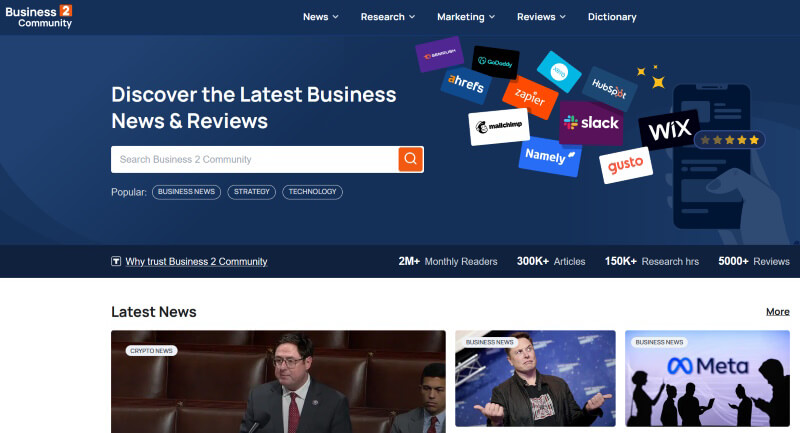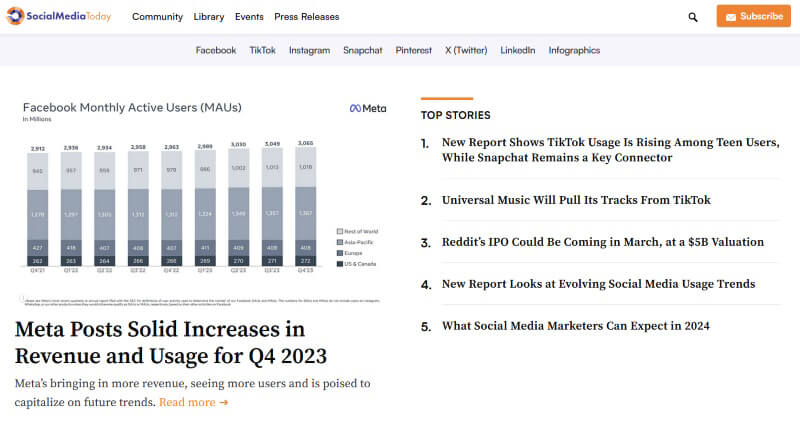How Content Syndication Can Boost Your Business

Every content marketer has a dream of penning a piece that will earn the same mass exposure as the uber-viral Gangnam Style music video. While that’s nothing more than a dream for many of us, greater exposure is certainly a goal that’s within reach. Guest posting can help you tap into other blogger’s networks, but it’s time-consuming to form the relationships and deliver original posts.
A relatively little-known option for your marketing strategy is to syndicate content, which carries many of the benefits of guest posting without the attached labor.
As Marketo’s Ravali Ravulapati points out, it’s not the right option for every content marketer but it can be a powerful boost if you’re operating on a shoestring budget.
What is Syndication?
The concept of syndication isn’t unique to web content marketing. It likely began around 1865, when print newspapers reigned supreme.
In the mid-19th century, small town newspapers found it difficult to hire the staff to create enough quality content, a familiar struggle for many content marketers today. As a result, newspapers began to purchase the rights to syndicate content, by publishing the best columns and comics from sources nationwide.
While blogs and social media may be replacing print media as primary information highways, the basic concept of syndication is definitely alive and well on the web. Not only can you syndicate your blog with the help of an RSS feed, there’s a number of websites which may republish your content.
There are serious pros and cons to the decision to syndicate content. Your website could reap the benefits of an instantly expanded audience, without the hard work of expanding your social media reach over time. The right syndication opportunities will also provide author bylines and a link back to your website, providing an instantaneous SEO boost.
However, it’s critical to fully explore all syndication opportunities before handing a website republishing rights to your content. As Ravulapati cautions, “some site owners often mistake permission to republish content for permission to repurpose.” You deserve full credit for your work, without exception. Additionally, if the website you’re syndicating allows you to include call-to-action buttons with your republished blog posts, you could notice your average lead quality plummet. However, for many companies, the benefits far outweigh the costs.
Pros and Cons of Syndicating Content
Not every website where you decide to syndicate content will result in instant fame and rock star web analytics. The wrong syndication agreement can provide to be a nightmare. We’ve highlighted some of the primary pluses and minuses below:
Pros:
- Expanded Audience: Some of the larger syndication websites boast social media followings as large as 100,000 or more. You could find your subscriber rates skyrocketing.
- Better SEO: The right syndication opportunities provide author bylines, including a link back to your website.
- More Lead Generation: By carefully targeting the websites where you syndicate to match the sites where your buyer personas are already reading, you may find your roster of qualified leads significantly expanded.
- Implicit Promotion: While most websites strictly prohibit promotional blog articles, you could be able to include links to you social media profiles in your author bio, or call-to-action buttons which link to landing pages on your website with your content.

Cons:
- Not All Websites are Reputable: It’s unfortunate, but it’s critically important to explore syndication agreements in full before you begin. This is particularly important when you’re looking at smaller websites without a well-established syndication program. As Ravulapati cautions, “some site owners often mistake permission to republish content as permission to repurpose.”
- Lead Quality Could Drop: While your lead generation may go through the roof, your new leads might be after your free eBook, not your product or service. If your sales team suddenly begins struggling with unqualified leads, it’s probably wise to implement a lead scoring program or lengthen your landing page forms.
While the decision to syndicate content is ultimately yours to make, many marketers have found that the benefits far outweigh the costs, provided they choose to publish on the right websites.
How to Find Websites With Syndicated Content
You can use various tools like BuzzSumo, SEMRush, and Ahrefs to find opportunities for sharing your content. Check a website’s recent backlinks to identify potential content sharing possibilities.
A simple way to begin is by doing a Google search. Look for articles that mention:
- “originally published in” [keyword]
- “originally appeared on” [keyword]
- “republished with permission” [keyword]
- “republished from” [keyword]
- “syndicated from” [keyword]
Like this:

Search within your industry, target geographic areas and buyer persona to discover websites which may be interested in publishing your content. We’ve highlighted a few of our favorite places to syndicate content, all of which have well-established audience, and accept a relatively wide range of content:
Business2Community

An independent news community focused on social media, marketing, PR and almost everything else related to business, this network can be a powerful tool for gaining some serious exposure. Depending on the quality of your syndicated content, you could also earn a prized spot as a featured article on B2C’s social media networks, which boast upwards of 47,000 followers collectively. As a final bonus, B2C articles are occasionally republished on Yahoo! Small Business. The website has a number of contributors, so it can be difficult to stand out amidst the fast-moving stream of fresh content. Treat the website like a second home, and network with other contributors to ensure your work is noticed.
The Nitty Gritty: Original contributions and syndication options are accepted. The process for applying is simple, and the website typically issues acceptance or rejection notifications quickly.
Social Media Today

This independent community focuses on sharing the latest tips and news regarding social media marketing, particularly as it relates to marketing, PR, and advertising. Some of today’s current marketing thought leaders built their initial audience and voice using syndication through Social Media Today. This award-winning website may not boast the same rapidly-moving stream of content as Business2Community, but their articles are always top-notch.
How to Get Started: Register an account on the site, and send an email informing the staff of your intent to contribute. Keep in mind that while acceptance to become a contributor is selective, getting posts published is even more elusive – the staff’s editors will sort through your RSS feed and accept only the content which best fits the site’s standards.
AllTop

It’s pretty hard to define AllTop, and even more difficult to describe exactly how it operates. It’s not a traditional website to syndicate content, but more like a really enormous RSS feed. That being said, it’s an option that’s certainly worth exploring if your content fits the site’s designated categories, which include business, health, culture, tech, people and more. Information is promoted to the front page of the site based on quality and popularity. Syndicate your content, become an active participant, and cross your fingers that you’ll get noticed. Hitting the front page of AllTop is the content marketer’s equivalent of striking gold.
How to Begin: Create an account on AllTop, and submit your website.
Medium

Medium is a popular and free website where people can share their articles and essays, including syndicated content that’s been shared before. It covers a wide range of topics, from tech folks to marketers to hobby enthusiasts and more. On Medium, there’s a handy tool that lets you bring in your content and set it up for their site in no time. But because it’s such a huge platform, your content might not stand out unless you promote it well. They also have a Partner Program that lets you make extra money from your posts.

LinkedIn is a social media site for business, and it lets you post longer content. Sharing your content on LinkedIn is simple and free, and you can easily send articles to your work connections. B2B marketers use this platform a lot for getting potential customers, so sharing content that matters is crucial. Just remember, LinkedIn doesn’t use tags, so make sure to mention your company website in other ways.
Quora

Quora is a well-known platform where people ask and answer questions, and it’s also a place to share your thoughts in blog-like posts. Quora is great for showing off your knowledge on different topics and becoming a go-to expert. You can also use it to syndicate your content. If you’re good at finding and answering relevant questions with your existing content, posting on Quora can bring in a bunch of free traffic.
If your initial requests to syndicate content are politely declined, don’t be disheartened. Having an established track record of creating quality content can open doors. Continue creating quality content and building an audience, and reapply in a few months.
While the decision to syndicate content may not be a silver bullet or a path to instant fame and recognition in your industry, it’s certainly a viable option for many content marketers. Finding the right opportunities and performing due diligence to ensure you’re connecting with a reputable website, can be a powerful tool to reach a new audience and build thought leadership.
Do you syndicate your content marketing? Which websites do you currently publish on?

Comments (0)